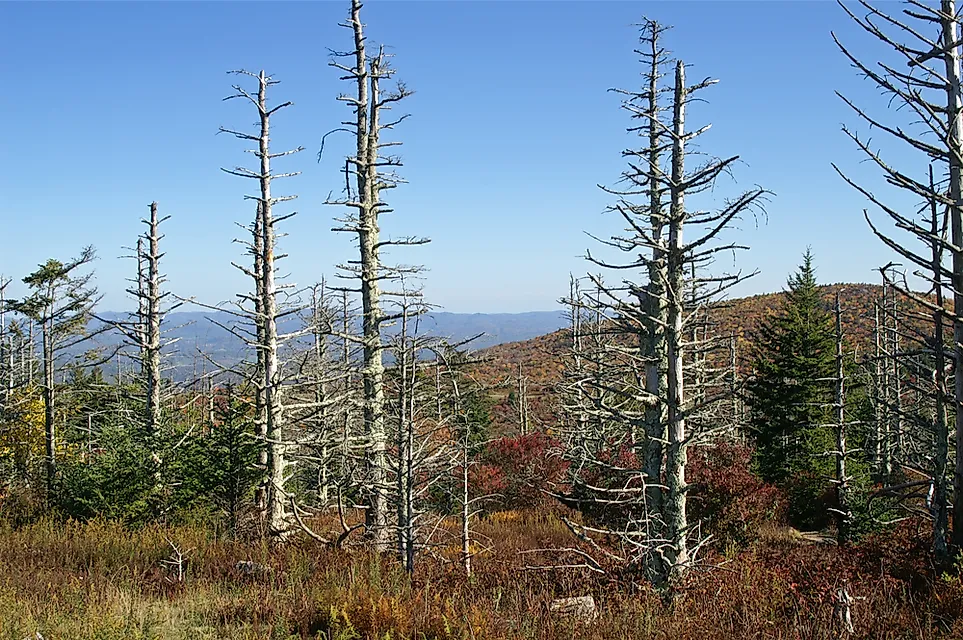How is Acid Rain Formed?

Acid rain is rain with an unusually low pH level, meaning it is extremely acidic. Acid rain is caused by the omission of harmful particles into the atmosphere, including sulfur dioxide (SO2) and nitrogen oxide (NO2). Acid rain can have harmful effects on plants, marine animals, humans, infrastructure and more. Since the 1970s, some governments have made efforts to limit the release of some gasses including SO2 and NO2 into the atmosphere. Although these gasses can be released naturally through lightning strikes and volcanic activities, they are mostly a product of human activities. For example, SO2 is created as a result of activities that burn fossil fuels, and NO2 is a byproduct of fertilizers.
How is Acid Rain Formed?
Acid rain is a product of the chemical reaction of sulfur dioxide and nitrogen oxide that is released with water, oxygen, and other chemicals into the atmosphere. Sulfur dioxide and nitrogen oxide readily dissolve in water and can be carried several miles by the wind. After traveling for a long distance, the two compounds become part of rain, sleet, snow or fog. Power plants emit sulfur dioxide and nitrogen oxide when fossil fuels such as coal are burned to produce electricity. Similarly, the exhaust from cars, trucks, and buses releases sulfur dioxide and nitrogen oxide into the air.
Effects of Acid Rain
Animals
In aquatic settings such as the ocean, lakes, streams, and marshes, the ecological effect of acid rain is evident due to the danger it presents to fish and wildlife. As it flows through the soil, acidic rainwater can leach aluminum from clay soil particles and flow into streams and lakes. The more acid that is introduced into the ecosystem, the more aluminum is released. Although some plants and animals can endure acidic waters and direct measures of aluminum, others are acid-sensitive and will die if pH levels are low. The young of most species are more sensitive to ecological conditions than mature species. At a pH level of 5, most fish eggs will not survive, and at lower pH levels adult fish can die.
Plants
Dead or dying trees are common in areas affected by acid rain. Acid rain leaches aluminum from the soil and the aluminum may be detrimental to plants and animals. The rain also eliminates minerals and nutrients from the soil that trees need to grow. At high altitudes, acidic fog and clouds might strip nutrients from the foliage of trees, leaving them with brown or dead leaves. This can cause difficulties in the absorption of sunlight, which makes trees fragile and less likely to endure freezing temperatures.
Conclusion
Nature depends on balance, and although some rain is naturally acidic, with a pH level of about 5.0, human activities have thrown this balance off. Ordinary precipitation reacts with basic chemicals or non-acidic materials which are found in air, rocks, soils, streams, and lakes. These reactions usually neutralize natural acids. However, if rain becomes too acidic, these chemicals may not be able to neutralize all of the acids. Over time, these neutralizing chemicals can be washed away by acid rain.











